10 Famous Coral Reefs In The World
Most of us are fascinated by bright, multi-coloured corals swinging with the water current and the waves. They are found in all colours we can possibly imagine. Though we have seen them in movies or television, they always intrigue us.
As beautiful as they are, these corals are extremely sensitive living organisms that live in warm and clean waters. Some are found in cold waters too. There are many types of corals, just as there are different kinds of fish in the sea.
They are often called the rainforests of the sea since they shelter and protect about 25% of marine species, even though they cover just 0.1% of the ocean area in the world. They form an essential and diverse underwater ecosystem, protect the coastlines, and provide tourism opportunities such as scuba diving and snorkelling.
Coral reefs are formed by millions and millions of coral polyps that latch on each other through calcium carbonate. Though most corals use photosynthesis, others have tentacles to catch prey to survive.
While most corals are not dangerous, a few are. Fire coral is found in the Caribbean and Southeast Asia. Its bright-yellow colour might seem inviting, and one might want to get closer to take a better look. However, it should be avoided. If one touches it accidentally, the coral shoots small tentacles like jellyfish, leaving one with immense pain.
Pollution, rising water temperatures and climate change threaten coral reefs worldwide. Once they die, they change colour and become greyish-white. Corals add to the beauty of our planet while offering numerous benefits. Hence steps should be taken to conserve them.
Now that we have learned about corals, let us look at the ten famous coral reefs worth visiting.
1. Great Barrier Reef, Australia
The biggest coral reef in the world, the Great Barrier reef, is also one of the healthiest in the world. It lies in the Coral Sea around 93 miles off the northeastern coast of Queensland, Australia, close to Bundaberg town. It spans 1400 miles or 2300 km and consists of 2900 individual coral reefs and 900 islands.
This is the world’s largest living structure that can also be seen from space! It is truly heaven for scuba divers and those wanting to study corals.

It is a UNESCO World Heritage Site and one of the Seven Wonders of the World. A major part of the reef comes under the Marine Park, which aids in its protection from human activities like overfishing and tourism.
The reef is home to over 1500 fish species, 6 turtle species, 15 types of seagrass, 5000 species of mollusc, 9 species of seahorse, and the list goes on. About 250 types of seabirds visit the reefs or live around their coastlines.
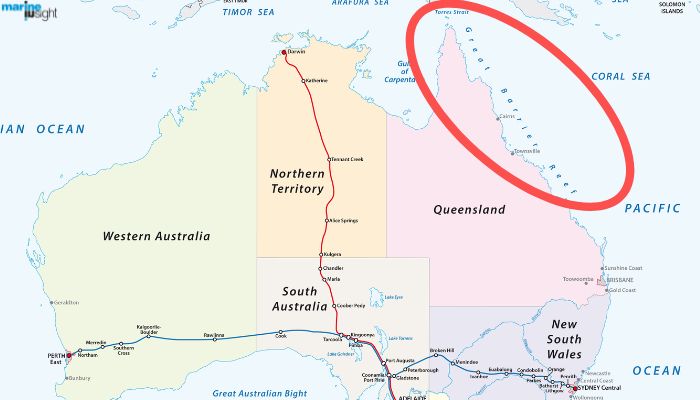
The diverse underwater life the great barrier reef supports is truly phenomenal. Also, one can get the best diving experience here. You can swim with sharks on the Osprey reef and observe manta rays, cuttlefish, clownfish, turtles and snakes.
Since coral spawning happens between October and November, the best time to visit the reef is between June and December.
2. Raja Ampat, Indonesia
One of the richest and most diverse coral reefs in the world, the Raja Ampat or ‘The Four Kings’ reef, is made of 450 different species of corals. It lies in the Coral Triangle and has 75% of all identifiable coral species on earth.
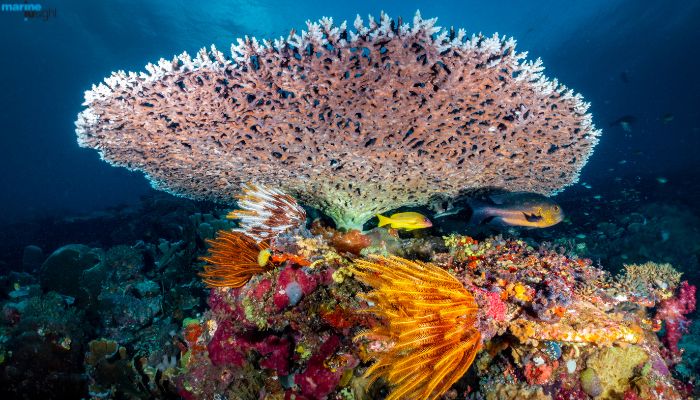
It covers 4.6 million hectares, of which 2 million comes under the marine protection zone, which houses over 1600 fish species, six endangered turtle species and 17 kinds of marine mammals.
Strong currents bring nutrients to the abundant interconnected corals such as the fringing ones, barrier, patch and atoll reefs. There are mangroves and different seagrass, too, which form an interdependent and complex food web. This is precisely why Raja Ampat is often referred to as the species factory.
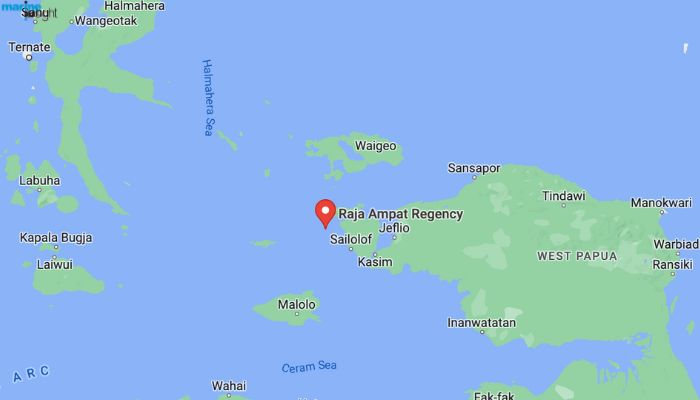
The coral reefs along the 1411 islands are essential for the locals and their livelihoods. The corals’ house several sponges, starfish, sea urchins, parrotfish and rainbow runners.
3. The Red Sea Coral Reefs, Red Sea
Situated amidst the world’s hottest and driest deserts, the Sahara and the Arabian desert, the Red Sea Coral reefs along the coasts of Egypt, Djibouti, and Israel are one of the oldest. Per scientists, they formed five to seven thousand years ago and are resilient in nature, capable of withstanding temperature changes, occasional turbidity and salinity, making them different from other reef systems.
They were formed due to the active tectonic forces, which continue to this day.
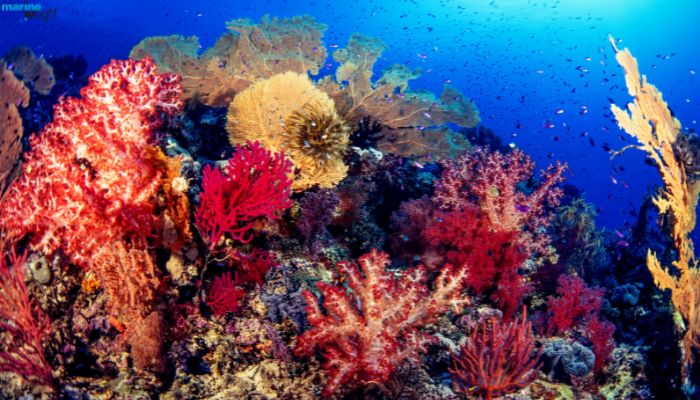
The Red Sea coral reef spans 1200 miles and comprises 300 species of hard coral and 1200 fish species, of which 10% are endemic to the area and depend on corals. This coral reef is unlike any other and holds a unique charm.
The Dahab Blue Hole, also called the Diver’s Cemetery, is a perilous dive, but the Bravehearts are awarded an incomparable diving experience.
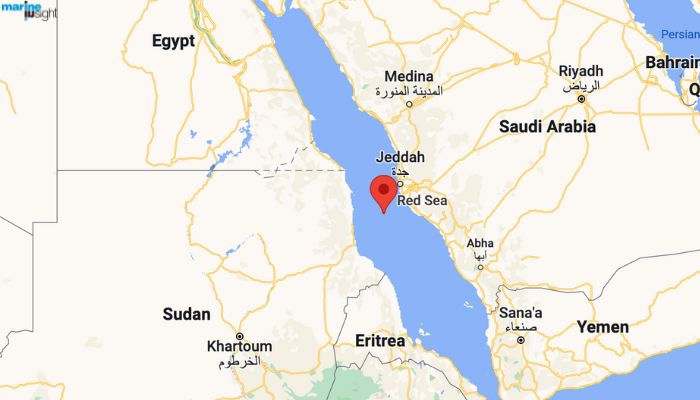
One can also visit Ras Mohammed Park, which has several diving sites. It has world-famous reefs, which make it worth a visit.
4. Rainbow Reef, Fiji
Rainbow Reef is located in the Somosomo Strait that stretches from Vanua Levu, the second biggest island in Fiji and Taveuni, the third largest island of the archipelago. There are 230 species of soft and hard corals and over 1250 fish species.
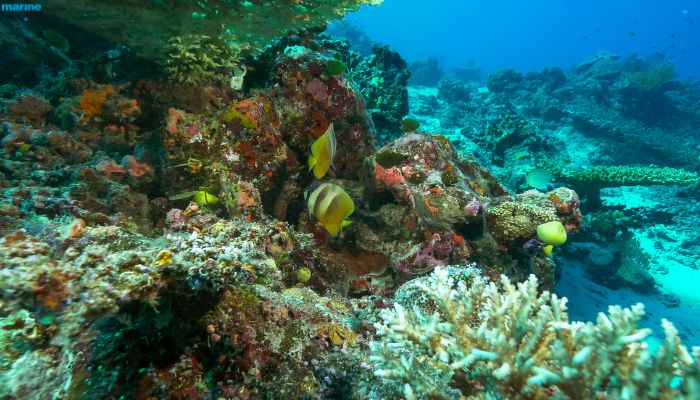
The word Somosomo translates to ‘Good water’ as the strait has powerful tidal currents which bring sufficient nutrients for the coral reefs. More than 25 dive sites are found around the Rainbow Reef.
Rainbow reef is a popular diving site in the South Pacific. One of the famous sites is the Great White Wall which is lined or covered with luminescent white coral and innumerable colonies of soft blue-blue corals.
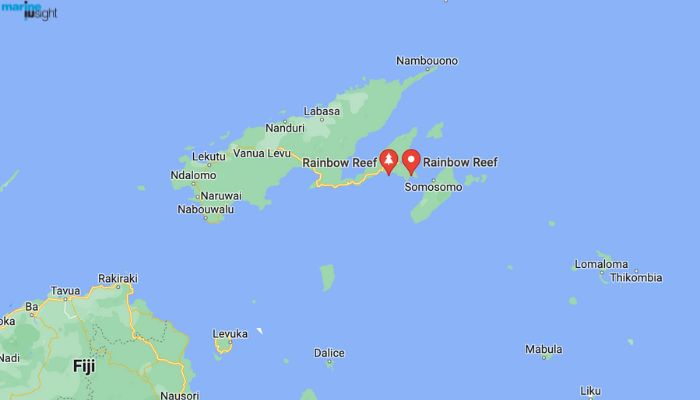
It looks magnificent. However, since the dive begins at a 20 m depth, it is not for untrained divers. One can swim with turtles, manta rays, barracudas and sharks.
5. Coral Reefs of the Maldives
Maldives comprises 1200 islands, each with beautiful and magnificent coral landscapes. Maldives has 3% of the world’s coral reefs; many are house reefs, which means they are close to a dive resort and beach.
There are about 2500 reefs, out of which 900 are house reefs. They are easily accessible and can be visited by untrained divers too. They are also perfect for snorkelling.
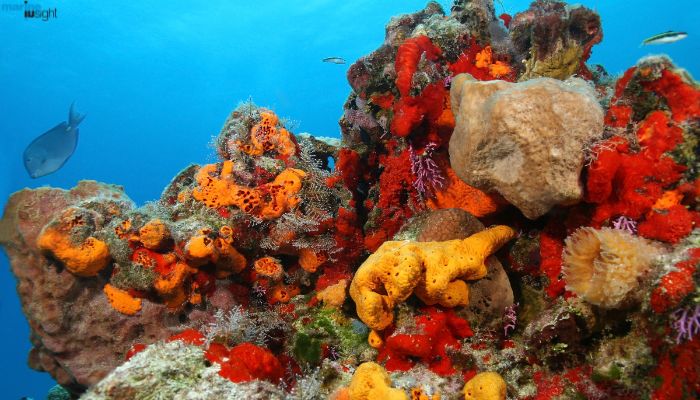
There are 26 atolls, a part of the marine mountain range that spans more than 2000 kilometres from Laccadive islands to the Chagos islands, i.e. from the north towards the south.
About 200 species of soft and hard corals, 1000 fish species, 400 mollusc species and, 350 types of crustaceans, 5 turtle species, 20 marine mammal species are found here.
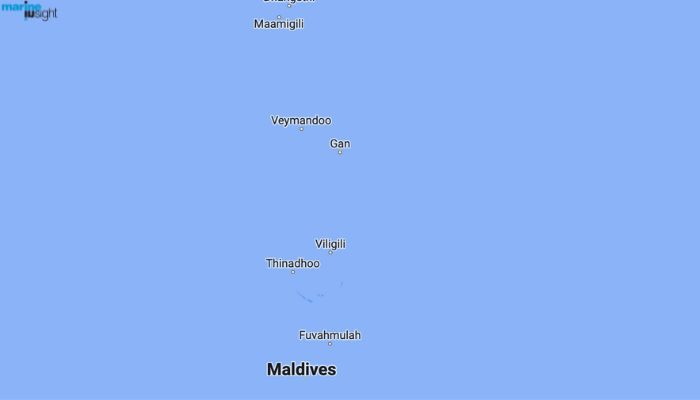
These coral reefs have been hardest hit as the Maldives is a popular tourist destination. However, the government is working to protect them. Also, the warming of waters and the 1998 El Nino event led to coral bleaching and the death of many corals. However, in recent years, there have been recovery signs noted by researchers.
6. Rose-shaped Coral Reefs, Tahiti
A pristine and rare coral colony of huge rose-shaped corals was found off the coast of Tahiti, the biggest island in the South Pacific. Professional divers working with UNESCO discovered and mapped this erstwhile hidden paradise. Interestingly, the corals were healthy and remained untouched by the recent bleaching events.
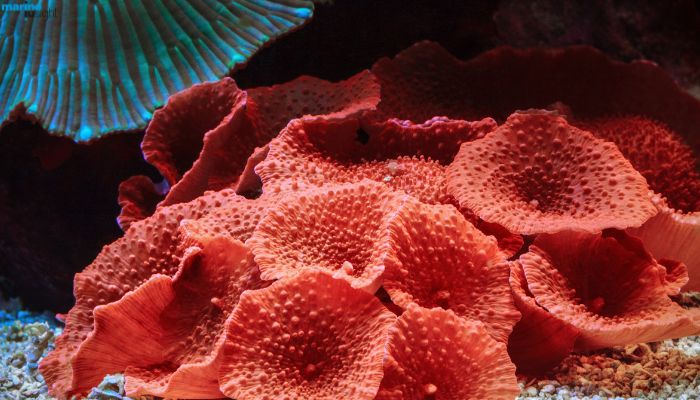
The reef is three kilometres long and lies 100 to 180 ft below the surface. This unusual depth for a coral reef could also be why it evaded any climate and temperature change effects.
The reef is dominated by the Pachyseris speciosa, a coral having a flower-petal or plate-like formation. It grows to form rose-shaped colonies that can spread two metres wide.
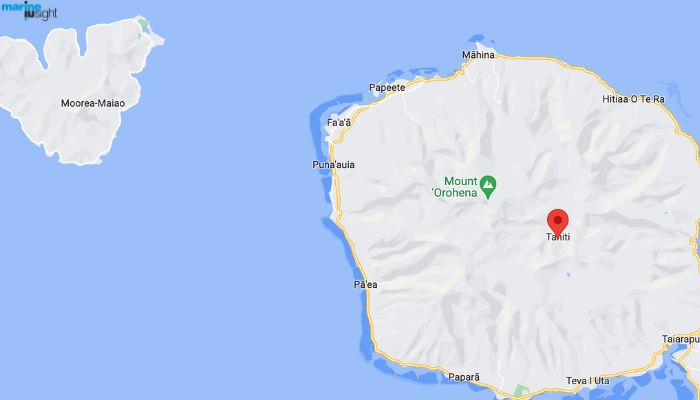
The seafloor exploration project Ocean 1, jointly run by UNESCO, led to the reef’s discovery in November 2021. One diver called the coral reef a truly majestic and beautiful work of art under the ocean.
7. New Calcedonian Barrier Reef, New Caledonia
The world’s second-biggest double-barrier reef, the New Caledonia Barrier Reef, is a marine treasure as it contains many unexplored, undiscovered and unique species of plants and animals. Much of the reef is pristine and has not been touched by humans.
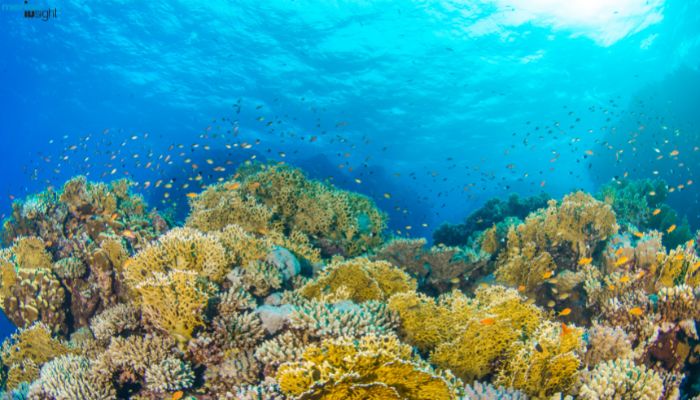
New Caledonia Reef lies in the South Pacific off the northeastern Australian coast. It is famous for its green turtles and houses 1000 identifiable fish species.
Interestingly, a beautiful lagoon spanning 9000 square miles with a 25 m depth allows the divers to explore and see many marine creatures.
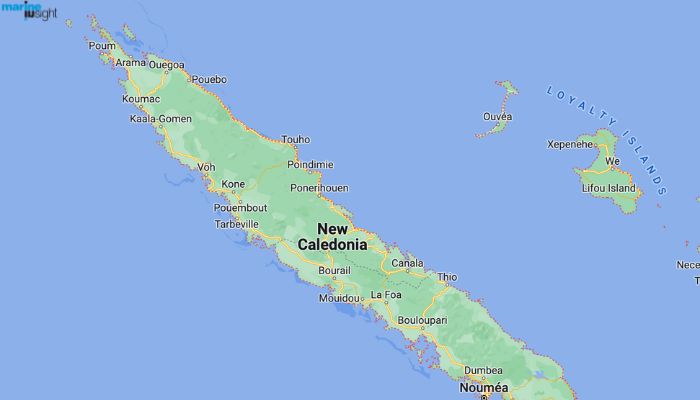
This UNESCO World Heritage Site has plenty of famous dive sites that one cannot miss. One such is the Daa Djare Ile des Pins which has two boulders of corals on either side. Swimming between them is a magnificent experience. Another popular site is the Donga Hienga Hienghene, where one can find colourful ribbon eels. The third largest dugong population is also found here.
8. Belize Barrier Reef, Belize
The biggest reef formation in the Atlantic-Caribbean region, the Belize Reef, is teeming with rare and threatened marine species. It is found along 400 islands lined with sandy beaches. The longest continuous barrier reef spans 298 km of coastline and is a top scuba diving destination.
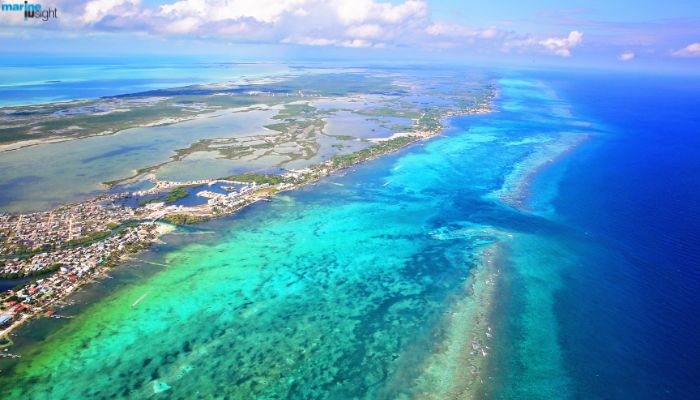
It was made a UNESCO World Heritage Site in 1996 and is the largest coral reef in the northern hemisphere. Many atolls, mangroves, cays, lagoons, bays and estuaries make a unique and interesting ecosystem in coastal Belize.
Seven well-known sites shed light on the evolution of reef development formation. They are also famous for sea turtles, manatees and American crocodiles. One can find bull sharks in the famous Blue Hole as well.
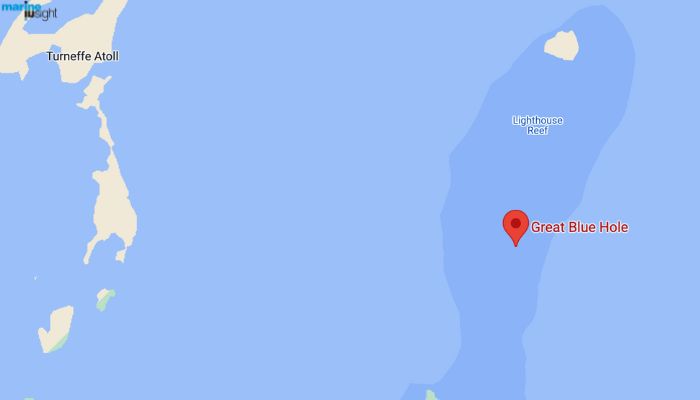
The reef has 106 coral species that shelter 500 types of fish. Sadly, forty per cent of coral reefs have been damaged due to human activities.
9. Tubbataha Reef, Philippines
Tubbataha reef is located amidst the Sulu sea, about 50 kilometres southeast of Puerto Princesa in the westernmost province of the Philippines. It was declared a World Heritage Site in 1993 and has two coral lagoons which support about 1200 species of fish.
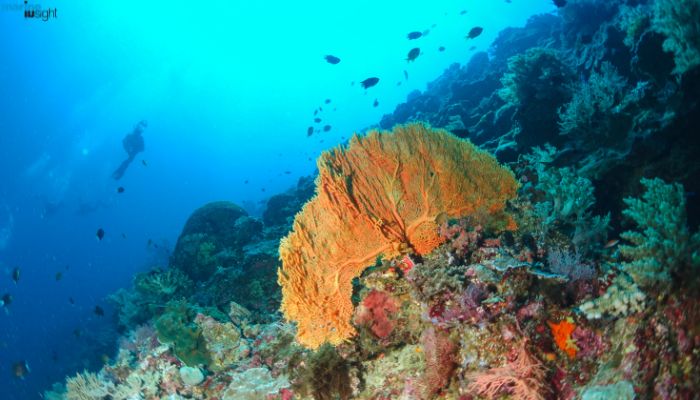
The Tubbataha coral reefs make a brilliantly colourful and vibrant underwater world, making it a favoured diving destination. It consists of two coral atolls teeming with 600 fish species, 360 coral species, 11 shark species, 13 dolphin and whale species and numerous birds.
The Tubbataha Marine Park spans over 96,000 hectares and includes the North and South Atolls apart from Jessie Beazley Reef.
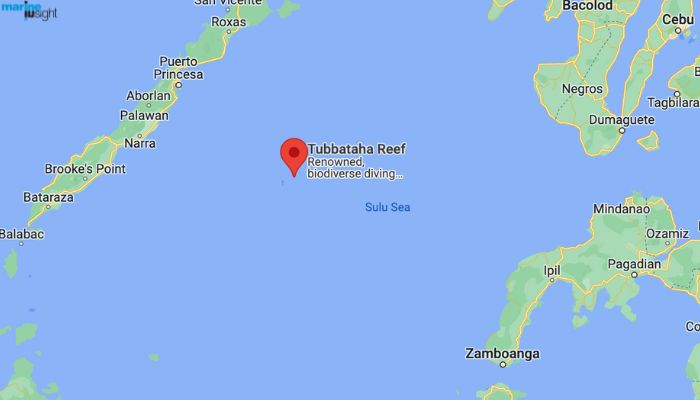
There are expansive reef flats and walls reaching a depth of more than 100 m. The magnificent tiger sharks, barracudas, and trevallies enhance the beauty of the corals.
10. Great Florida Reef, USA
This is the only coral formation in North America and lies off the Florida Keys. The reef stretches from the Dry Tortugas National Park to the Key Biscayne. It is the world’s third-largest coral barrier reef system.
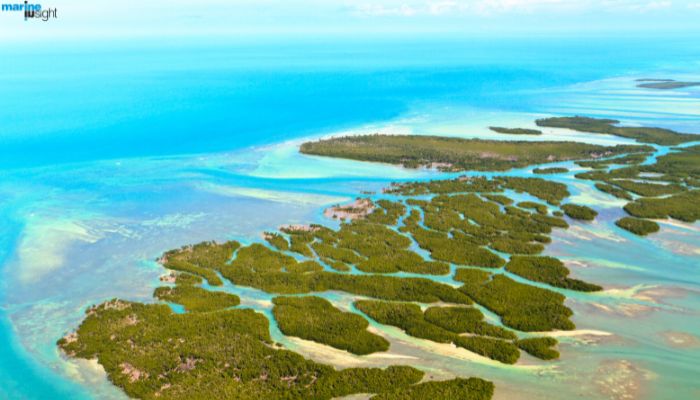
It forms an arc, stretches for 270 km, and is 6 to 7 km wide. The system is five to seven thousand years old and comprises 6000 individual reefs. There are two prominent ridges, and the reefs are home to 1400 species of marine animals and 500 species of fish.
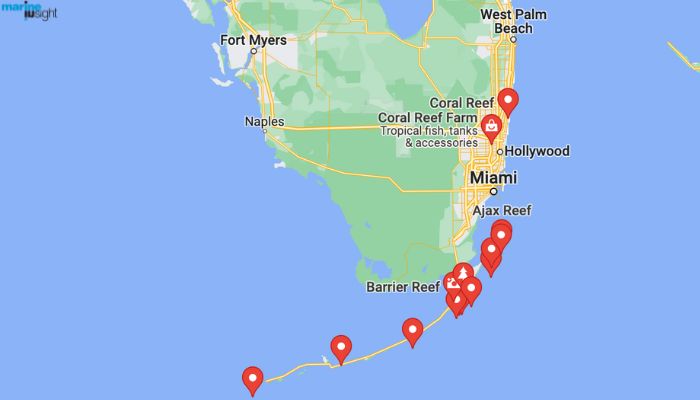
One can charter a boat to the reef or rent a kayak. Some of the famous dive sites of this reef system include the Molasses reef, which has beautiful coral colonies. In honour of the scuba divers, a famous statue called the Christ of the Abyss was placed in the waters of the reef in 1961. The 3.3-metre-tall sculpture is located close to Key Largo Dry Rocks.
You may also like to read-
- 15 Amazing Facts About Coral Reefs
- How Ships are Destroying Coral Reefs Around the World?
- Coral Rasa: Marine Life Monitoring Device
- The Silent Evolution : An Artificial Coral Reefs With a Difference
Disclaimer: The authors’ views expressed in this article do not necessarily reflect the views of Marine Insight. Data and charts, if used, in the article have been sourced from available information and have not been authenticated by any statutory authority. The author and Marine Insight do not claim it to be accurate nor accept any responsibility for the same. The views constitute only the opinions and do not constitute any guidelines or recommendations on any course of action to be followed by the reader.
The article or images cannot be reproduced, copied, shared, or used in any form without the permission of the author and Marine Insight.
Do you have info to share with us ? Suggest a correction

About Author
Zahra is an alumna of Miranda House, University of Delhi. She is an avid writer, possessing immaculate research and editing skills. Author of several academic papers, she has also worked as a freelance writer, producing many technical, creative and marketing pieces. A true aesthete at heart, she loves books a little more than anything else.
Subscribe To Our Newsletters
By subscribing, you agree to our Privacy Policy and may receive occasional deal communications; you can unsubscribe anytime.



